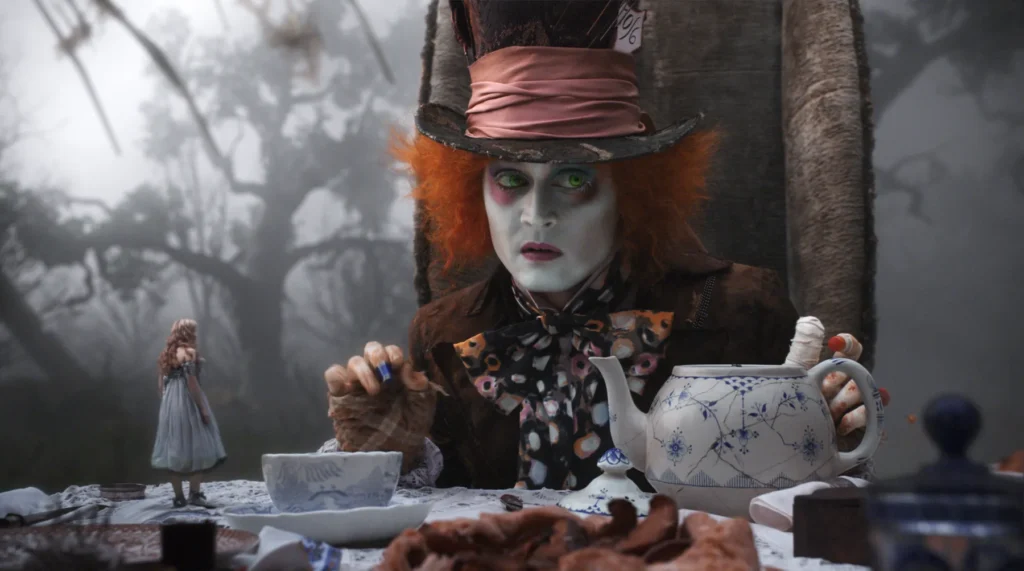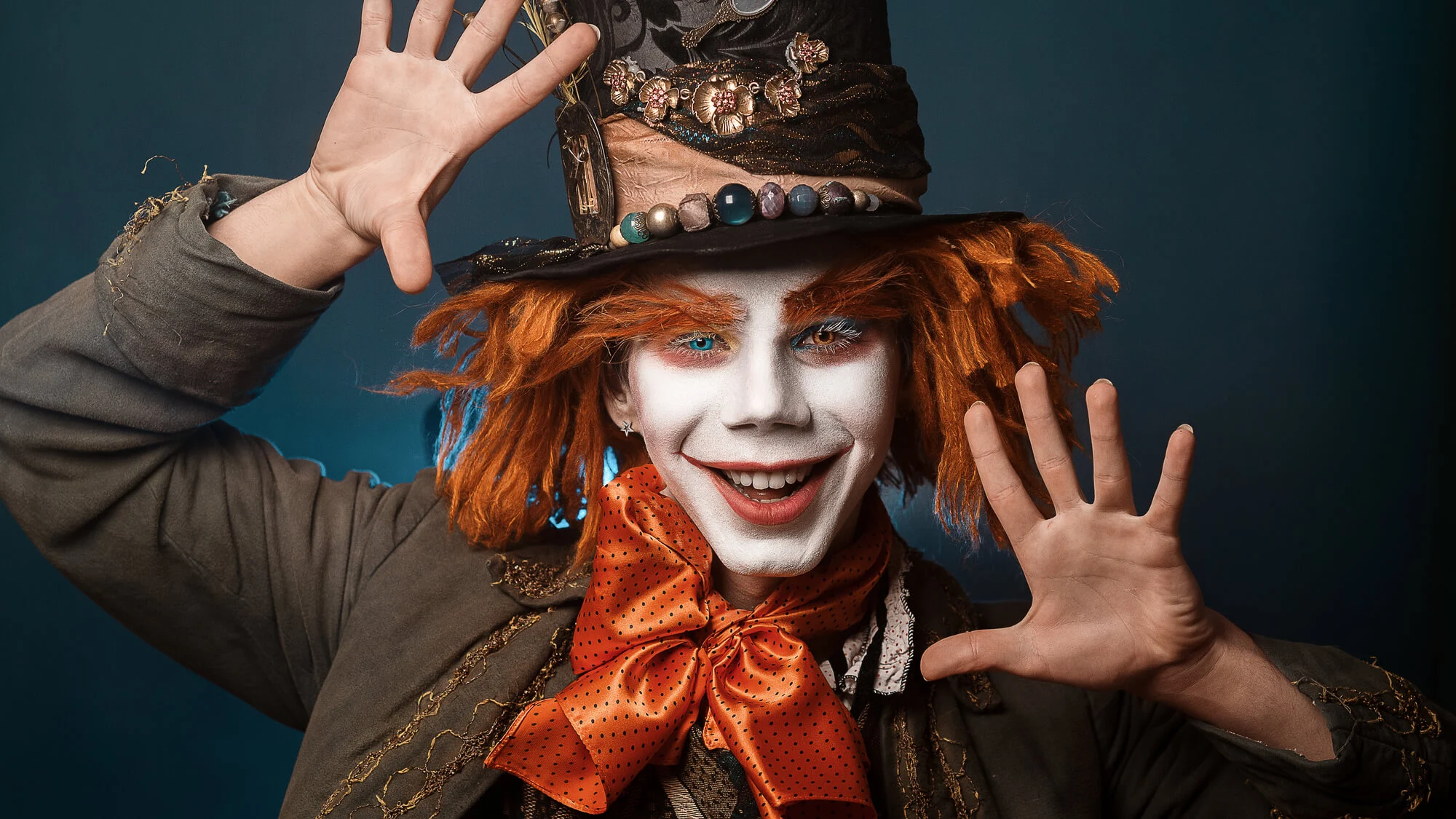Mad Hatter Day, celebrated annually on October 6, is a special way to pay tribute to one of the most eccentric key characters produced by Lewis Carroll, the Hatter. Learn all about the day and how to celebrate it below.
Have you been you? Or has this world dimmed your muchness? If that’s a yes, October 6 might just be the day for you, and there’s a duo to your rescue. Offer your thanks to Lewis Carroll and his iconic literary character, the Hatter, from his timeless classic Alice’s Adventures in Wonderland – it’s Mad Hatter’s Day! We’re taking a leaf out of Carroll’s book, donning one of Hatter’s hats today. Tea, anyone?
History of Mad Hatter Day: Celebrating Literary Nonsense
Enjoyed by readers old and young, Lewis Carroll’s classic Alice’s Adventures in Wonderland was first published in 1865 with iconic illustrations by John Tenniel. Tenniel’s sketches famously depict the Hatter wearing a top hat bearing the note ‘In this style 10/6’.
Although this is really an order from the time, indicating that a hat in this style costs 10 Shillings and 6 Pence, in 1986, a group of computer programmers from Boulder, Colorado, USA, decided to tip their hats in celebration to Hatter’s eccentricities (and ours) on the date 10/6, commemorating this day as Mad Hatter’s Day. Since then, it has been an unofficial and quirky holiday and a reason for fans of Wonderland to indulge in some insanity – we’re all mad here on 10/6.
The Hatter: A Whimsical Literary Icon
The Hatter is a character famed for his enigma and eccentricity. Distinguished by his vibrantly mismatched clothing, complete with a top hat and his often incoherent and nonsensical speech, the Hatter embodies the whimsical and absurd world of Wonderland, a place where logic and reality are constantly upended.
Hatter serves as a symbol of madness in literature – not portrayed as threatening or dangerous, but rather as a reflection of the topsy-turvy nature of Wonderland itself. Another of Hatter’s defining characteristics is his obsession with time. In the story, he and his companions, the March Hare and the Dormouse, are stuck at a never-ending tea party. It’s a party where the tea is brewed but never consumed, where the clock’s hands are frozen in eternal stagnation. Carroll’s portrayal of the Mad Hatter’s fixation on time is a literary commentary on the rigidity of societal norms. The Hatter is essentially a symbol of rebellion, and through him, Carroll sought to question and challenge society’s conventions and reality’s bounds – with the Hatter becoming a literary device allowing Carroll to explore the concept of madness as a means of breaking free from the constraints of the world.
The literary significance of The Hatter lies in his ability to challenge the norms of storytelling. Being a symbol of defiance against the logical and mundane by blurring the lines between sanity and insanity, the Hatter provokes readers to question the very essence of reality, whether the conventional order is as stable as it seems, and whether there might be value in embracing a little madness.
Also Read: Which Alice in Wonderland Movie Is Best?
Some Mad Hatter Trivia
- Although he is popularly known as the ‘Mad Hatter’, Lewis Carroll never calls him that in the story. He is simply referred to as ‘the Hatter’.
- The phrase ‘mad as a hatter’, used to describe someone who is crazy or prone to unpredictable behaviour, did not originate with Carroll’s Hatter. However, its origin is often misattributed to him, thanks to his eccentric behaviour. Instead, the expression is linked to the hat-making industry and mercury poisoning during the late 18th and early 19th centuries when hat makers used mercury nitrate as part of curing felt. Prolonged exposure to mercury caused employees to develop a variety of physical and mental ailments, including tremors (dubbed ‘Hatter’s shakes’), speech problems, emotional instability and hallucinations.
- Lewis Carroll once answered the Hatter’s famous riddle ‘Why is a raven like a writing-desk?’ in a preface to the 1896 edition of Alice’s Adventures in Wonderland after being badgered by fans for long. The answer was: ‘Because both produce a few notes, though they are very flat and it is “nevar” put with the wrong end in front!’
- There are many theories regarding the inspiration behind Carroll’s iconic Hatter. The most popular one is that Carroll intended the character of the Mad Hatter to be an outlandish caricature of a man named Theophilus Carter – an eccentric British furniture dealer from Oxford who always wore a hat and had crazy ideas.
- Hatter inspired the creation of a DC comics supervillain, Jervis Tetch. An adversary of the superhero Batman, he is the supervillain who keeps his Wonderland counterpart’s costume and personality, with many gadgets stored in his hat. In the world of Batman, he is a scientist who uses mind-controlling devices to manipulate his victims.
- Lewis Carroll grew up in a hat-making town. So he understood hatters, mad and otherwise, due to his upbringing in Manchester, England, where hat-making was the primary occupation.
Ways to Celebrate Mad Hatter Day

The Mad Hatter Day encourages us to embrace our inner Mad Hatter, to reject the mundane, and to explore the limitless landscape of our creative imaginations. So go ahead and indulge in some silliness – how about sneaking away some tarts for tea? The Queen of Hearts won’t order your head off if you’re already out of your head this day!
In owning the essence of this day, it’s best to commemorate it in your own quirky way. Nevertheless, here are a few suggestions to get your imagination going:
-
- Wear Crazy Hats: Embrace the spirit of the Mad Hatter by donning your wackiest, most eccentric hats, whether a top hat, a novelty hat, or even a handmade one; the more outrageous, the better!
- Host a Mad Tea Party: Organise your mad tea party by decorating your table with mismatched teacups, saucers and plates. Serve an array of teas and treats labelled ‘Drink Me’ and ‘Eat Me’. Perhaps even hide a little Dormouse toy in one of the teapots and ensure the clock in your room stops at six. Tea time forever!
- Read and/or Watch Alice’s Adventures in Wonderland: Revisit the chapter ‘A Mad Tea-Party’ where Alice first encounters the Hatter, or perhaps (re)read the entire book if you wish. Alternatively, watch one of the many film adaptations to immerse yourself in the fantastical world that inspired Mad Hatter Day.
- Nonsensical Games and Activities: Engage in activities that celebrate creative silliness. Encourage friends and family to get imaginative with their outfits. Create Wonderland-inspired artwork/decor. Exchange your favourite nonsensical quotes from the book, or maybe write your nonsensical poem, story or dialogue by embracing wordplay. Challenge each other to Futterwacken. And how about speaking in riddles the entire day? Or a Cheshire Cat Grin contest if you so prefer!
- Alice’s Adventures in Your Neighbourhood: Organise an ‘Alice’s Adventure’ in your neighbourhood with a Wonderland-themed mystery hunt. Map out key locations and challenges inspired by the story, and include clues and riddles that lead participants through a whimsical adventure. Make sure to link references to iconic Wonderland characters and locations with those in your locality! And encourage everyone to wear their craziest hats.
- Donate to a Tea Charity: In the spirit of the tea-loving Hatter, consider donating to a charity or organisation that supports tea growers and helps promote fair trade practices.
- Share the Madness: Share your Mad Hatter Day celebrations through photos and social media posts, using hashtags like #MadHatterDay to connect with others celebrating this whimsical holiday.
- But most importantly, don’t lose sight of the essence of this celebration – be the most you you can be.
In times of increasing rigidity, the Mad Hatter invites all of us to wear what we like, do what we like, and share some tea and scones with anyone we like. So, on this Mad Hatter’s Day, let’s raise our teacups to the enduring magic of literature and the delightful madness that resides within each of us.
——
“‘How do you know I’m mad?’ said Alice.
‘You must be,’ said the Cat, ‘or you wouldn’t have come here.’”

